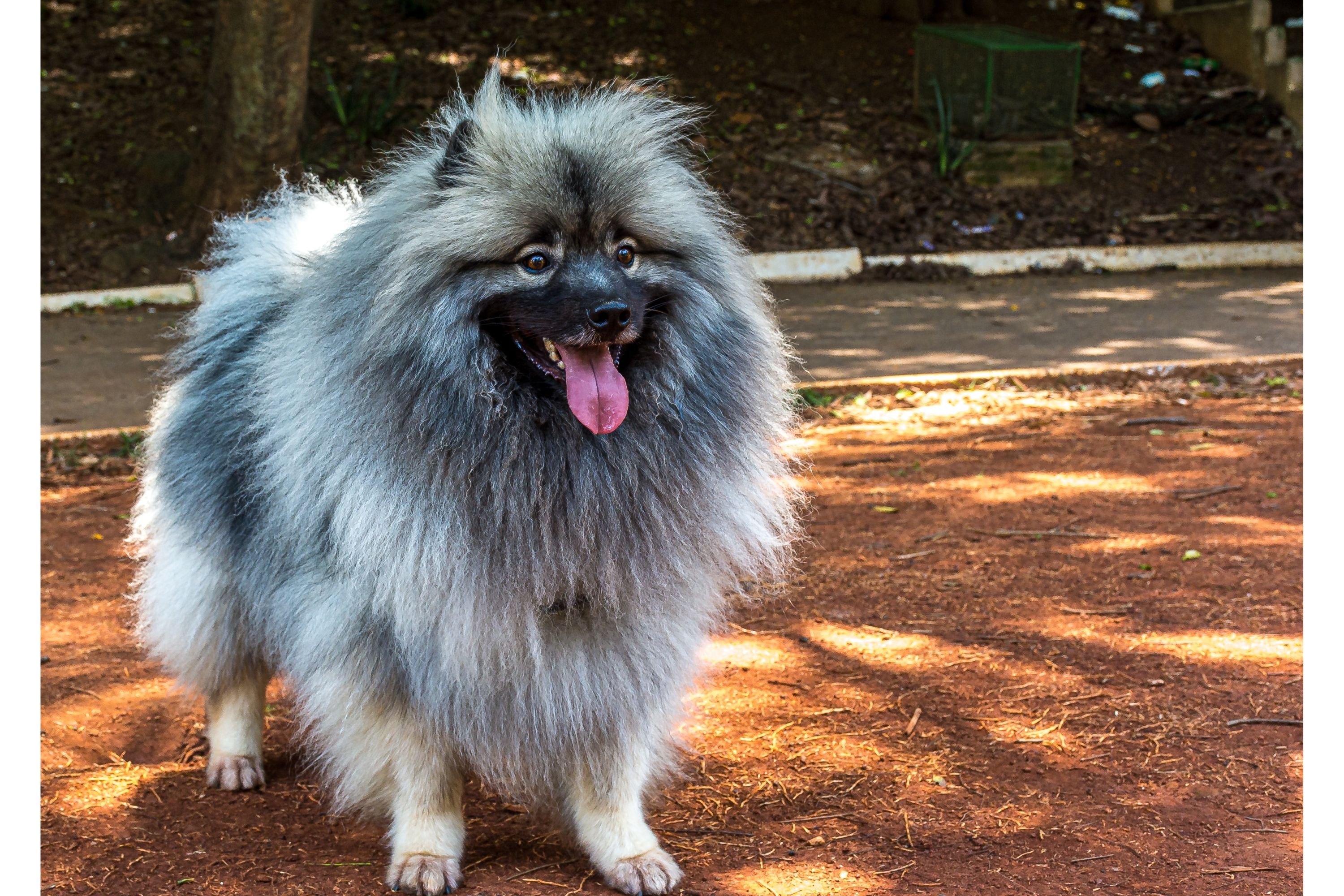Keeshond
(Keeshond)

Description
The Keeshond, also known as the Wolfspitz or the Dutch Barge Dog, is a medium-sized breed of dog that originated in the Netherlands. This breed is known for its distinctive thick, fluffy coat and its friendly, outgoing personality. In this article, we will provide a detailed overview of the Keeshond dog, including its history, physical characteristics, temperament, training needs, and health concerns. History and Origin: The Keeshond is a very old breed of dog that dates back to the 18th century. This breed was developed in the Netherlands and was originally used as a companion animal, watchdog, and vermin hunter on Dutch river barges. The Keeshond was also popular with Dutch Patriots, who used the breed as a symbol of their political movement. The name "Keeshond" actually means "Kees' dog," after Cornelis (Kees) de Gyselaer, a Dutch patriot who owned several of these dogs. Physical Characteristics: The Keeshond is a medium-sized breed of dog that typically weighs between 35 and 45 pounds and stands 17 to 18 inches tall at the shoulder. This breed has a distinctive thick, fluffy coat that is typically silver and black or gray and black. The coat requires regular grooming to prevent matting and shedding. The Keeshond also has a fox-like face with small, pointed ears, dark, almond-shaped eyes, and a distinctive "spectacle" marking around the eyes. Temperament: The Keeshond is known for its friendly, outgoing personality and its loyalty to its family. This breed is great with children and other pets and is generally good-natured and playful. Keeshonds are also very intelligent and trainable, but can be stubborn at times. This breed is known to bark a lot and can be wary of strangers, making them excellent watchdogs. The Keeshond thrives on human interaction and can become anxious or depressed if left alone for long periods of time. Training Needs: Keeshonds are intelligent and eager to please, but can be stubborn at times. Early socialization and obedience training is recommended to ensure that this breed develops into a well-behaved and well-adjusted adult dog. Positive reinforcement training methods, such as praise, treats, and toys, work best with this breed. Keeshonds also benefit from regular exercise and mental stimulation, such as daily walks, playtime, and training sessions. Health Concerns: Like all breeds of dogs, the Keeshond is prone to certain health issues. Some of the most common health concerns in this breed include hip dysplasia, luxating patellas, and progressive retinal atrophy. Keeshonds are also prone to obesity, so it is important to monitor their diet and exercise levels to maintain a healthy weight. Regular veterinary checkups and preventative care can help to catch and treat any health issues early on. In conclusion, the Keeshond is a friendly, loyal, and intelligent breed of dog that makes an excellent companion animal for families and individuals alike. With proper socialization, training, and care, this breed can thrive in a variety of settings and environments. If you are considering adding a Keeshond to your family, be prepared to devote time and attention to this furry, lovable companion.
Taxonomic tree:







